Gamification in the automotive industry is an upward trend. Many automotive companies are increasingly taking advantage of the principles of gamification and digital engagement to motivate employees and customers alike. Thus, car brands generate more attention and leverage long-term loyalty.
They achieve significant revenue growth by skillfully applying gamification strategies that increase engagement and motivation of their customers.
Some examples of gamification in the automotive sector are clearly designed for the user’s sense of fun. Those are the so-called explicit gamification. However, other examples, such as Audi’s virtual employee training, make use of mechanisms to increase employee motivation, interest in learning or the incentive to buy, without explicitly distinguishing themselves as gamification mechanisms. Those are called implicit gamification.
In this article, I have summarized some examples of successful gamification in the automotive sector.
Porsche Austria – Loyalty Program BONEO
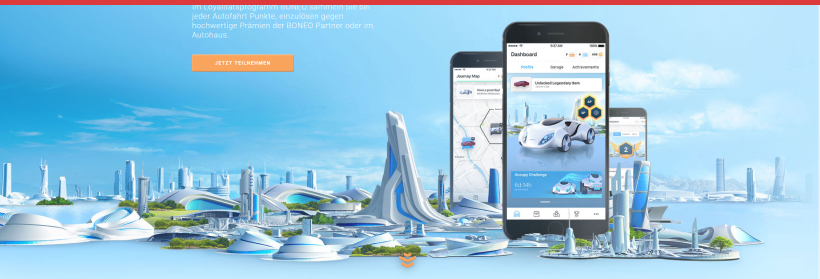
Source: boneo.at
BONEO is an innovative loyalty program from Porsche Austria, first released in 2018.
The loyalty programme uses numerous gamification mechanisms to bind customers to the car brands in the long term: BONEO is connected to the car in the form of an app. Users have their own avatar, which they can improve and upgrade with digital items. These items and other rewards, such as a free drive in a Porsche or Audi, are distributed through lootboxes.
Lootboxes are digital chests that users receive from time to time. In such a lootbox, users can find many rewards of the programme – points, coffees at the local gas station, a free car wash, a free weekend with a Porsche and other cool stuff. But which one they get exactly is a matter of luck. Therefore, getting and opening lootboxes feels way more interesting.
BONEO is a good example of how digital gamification can increase customer loyalty and therefore reduce the cost of other less targeted marketing activities.
More information about BONEO can be found on the official website.
Audi – Virtual Employee Training
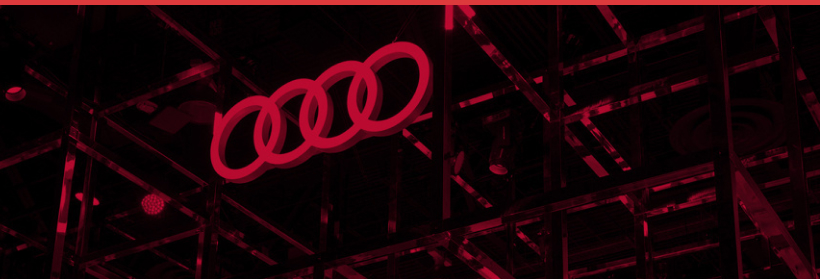
Source: Audi
In 2018, Audi announced a virtual training program for its dealership employees. In a setting similar to a computer game, employees can practice how to get the customer right.
Within the experience, they have to deal with funny and challenging situations and have to master these virtual encounters with equally virtual, but sometimes difficult customers.
These virtual customers have a mood barometer – similar to games like The Sims. The employee who is going through the training program can immediately see what responses his actions trigger – and therefore do better the next playthrough. This is a good example of the gamification mechanics of fast feedback.
The concept of virtual training clearly aims to make learning how to deal with customers more fun and rewarding.
For this reason, Audi wants to set the training courses apart from a pure learning context that is often unpopular amongst employees. By applying gamification, the whole programme becomes not only more appealing, but also more sustainable: Those who enjoy learning will remember what they have learnt better and will generally be more open-minded to use the content they have practiced later in the field.
In addition, the approach of conducting virtual trainings as opposed to physical ones, where real trainers have to be present, is of course much more scalable. The results are impressive: According to Audi, more than 570 car dealerships in Germany already use the Gamification training programme.
Hyundai – The Walking Dead Chop Shop
In 2013, when the series ‚The Walking Dead‘ attracted millions of people worldwide to the screen and simultaneously an international hype about zombies had broken out (in the sense of: suddenly everyone found zombies totally exciting and fun), Hyundai jumped in on the zombie hype train with a high quality gamification app.
As a result, they created a virtual car configurator where users could equip a Hyundai model with various armour, weapons, zombie defense utensils, spikes and so on. Just anything you need for a zombie outbreak.
This app was then offered free of charge and promoted through analog ads, digital commercials and street events. By using the app regularly, by answering questions or by taking part in social media activities, users could unlock new equipment and share and compare their virtual zombie defense cars with the community.
This event was a playful way to draw the attention of the high-margin young-age target group towards the various Hyundai models. The app was downloaded many millions of times and shared thousands of times.
Ford – Efficiency Leaves
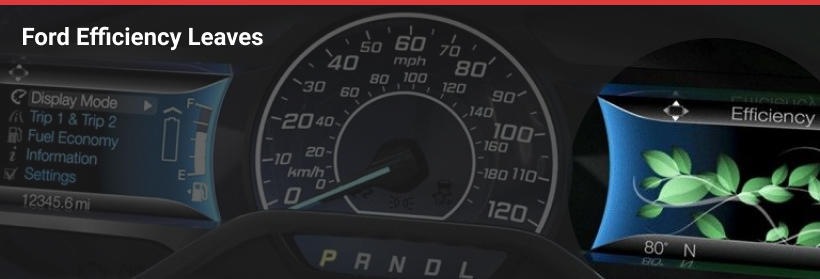
Source: Ford (Emphasis Added)
In 2013, Ford introduced the so-called Efficiency Leaves. This gamification example motivates users to drive in a particularly efficient and energy-saving way.
The Efficiency Leaves are virtual plants on the screen inside the vehicle. Depending on the driving style, they grow and soon gain new leaves, or lose leaves when driving inefficiently. The Efficiency Leaves still exist today – the picture above is from a current model.
Ford itself says about its Effciency Leaves:
The Efficiency Leaves are a good example of implicit gamification in the automotive sector. Drivers are motivated to grow their virtual plants with many leaves, and thus learn how to drive particularly efficiently and economically. The display of the leaves is way more intuitive and attractive than a mere numerical score.
WAZE – Gamified Navigation App
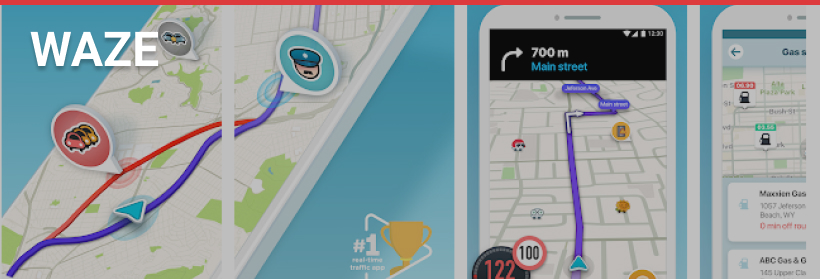
Source: waze.com
WAZE is a navigation app that relies on the participation of its users. Whenever users notice a new speed camera, a roadblock or a traffic jam, they can immediately notify the app and thus all other users who have also installed WAZE.
To increase the motivation to enter new traffic information into the app, WAZE has come up with an avatar and progression system – a nice gamification example.
All users of the app possess a small avatar. This avatar is visible on the map – so while I’m driving, others see my avatar and I see the ones of others.
To upgrade an avatar so that it looks more beautiful and users are seen by the community as an experienced and valuable member, you need to collect points. Every time you feed new information into the system or confirm bits and pieces of information that others have given, WAZE adds a few of those juicy progression points to your digital wallet.
In addition, users sometimes find little bags filled up with points on certain roads that can be collected by just driving over it. A clever way to motivate users driving alternative routes to avoid traffic jams.
WAZE was so successful that Google bought the company for 1.1 billion dollars.
Ford – Fordpass App
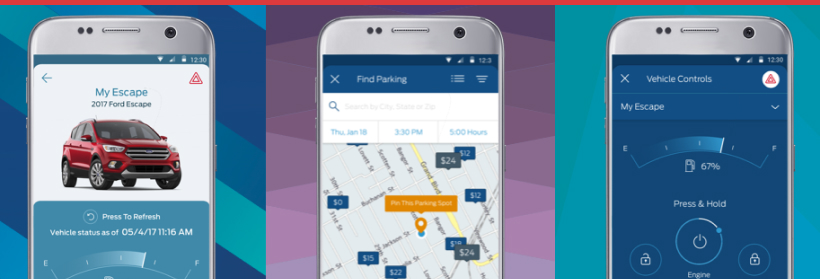
Source: ford.com
Fordpass is an app from Ford that can be connected to your own vehicle.
Users can use the app to control various vehicle functions (for example, heating, even if they are not in the vehicle but want to preheat), read data such as fuel status and tire pressure, enter routes into the navigation system or simply check where the vehicle was parked – should you forget where you last left it.
Ford’s goal is clear: The app specifically aims to serve as a customer gateway in the future. Because users have to connect their vehicle to the app, Ford will find out which vehicle is being driven, what the driving routines are, whether there are any children on board, and so on. On the basis of this data, they can advertise much more efficiently.
Ford has also built badges into the app – for certain actions, regular use and linking other services such as FordPay, the user unlocks those badges.
Unfortunately these badges are implemented rather half-heartedly. Badges activate extrinsic motivations, and the mere addition of bagdes, points or leaderboards is a typical trap into which many run: The motivation that arises is not sustainable enough.
At this point, Ford only implemented a good idea – namely to increase the engagement of the users of their car app through gamification – in a mediocre way. With a better implementation, it would certainly be possible to generate significantly higher usage numbers. But nevertheless: Ford is trying to leverage gamification and seems to just have started!
Volkswagen – Speed Camera Lottery
The idea for the Speed Camera Lottery was born as part of the advertising campaign for Volkswagen’s BlueMotion technology in 2011.
It is a successful example of gamification in the automotive sector and has gained worldwide recognition. The concept behind the speed camera is to motivate people to drive slower and more consciously, instead of merely imposing fines.
This is how the concept worked: The camera set up in Sweden took a picture of all passing cars – even those that didn’t drive too fast. By driving within the speed limits, drivers automatically put a ticket into a virtual pot. The fine imposed on all those drivers who drove too fast was then raffled off among those who had not been noticed negatively.
The camera was equipped with a large display and gave a thumbs up to all passing drivers who kept to the speed limit. This and the virtual raffle did not only make the drivers feel that they were not punished when driving legally, they also felt that they were rewarded. The camera added an additional motivation not to exceed the speed limit, because there was not only something to lose, but also something to win. Passing the speed camera became a game.
The results were outstanding: The average speed of all passing cars could be reduced by 22%. At the same time, Volkswagen sales in Sweden, where the camera was installed, increased significantly. However, it is hard to tell which parts of this increase can be attributed to the camera and the associated marketing effect. In any case, the Speed Camera Lottery is a successful example of gamification in the automotive sector.
Mercedes – Urban Hunt
Mercedes launched a gamification marketing campaign in Zurich to accompany the launch of the all new Mercedes GLC Coupe.
The central element of the campaign was a mixed reality app with the title Urban Hunt. Participants in the campaign installed the app on their smartphones and then joined an experience that turned the entire city into their playing field.
Mercedes-Benz models acted as „hunters“, chasing the participants across the city. The players could follow the position of the hunter on their smartphone. There were health packs that could be collected and traps that were designed to make life difficult for other players. The goal of the experience was to survive for a very long time, so that in the end the Hunter – the real Mercedes-Benz vehicle – could be taken home. It was basically a last-man-standing game.
Spectators and players who had already been eliminated were able to watch the event live on screens installed in the city. A virtual map showed where the Hunter was and where the participants were, and who was captured.
A total of several thousand people took part in the activity. It was a great gamification example of how a large-scale marketing campaign can get thousands of people to participate, and how the media attention that the event generated could inform thousands more about the launch of the new model.
Lexus – Augmented Reality App
In 2020, Lexus released an app to preview the new edition of the IS model, which will be launched in 2021.
Using their smartphone, users can place the virtual car directly in their home, view it from all sides and open the doors.
The car can be personalized and its color can be adjusted.
So, where’s the gamification in it? Here’s the trick to this example: users can virtually drive the car and chase it around their own house like a remote-controlled toy – all via the smartphone screen, of course, because the car only exists virtually.
Lexus has also built in a snapshot function to organically increase the app’s outreach and visibility on social media. Once the car has been customized by the user and placed in a suitable environment, it can be photographed and published on social media.
Translated with www.DeepL.com/Translator (free version)
More examples?
Do you know any other examples that should be on this list? Then write me a message or tell me in the comments below!
